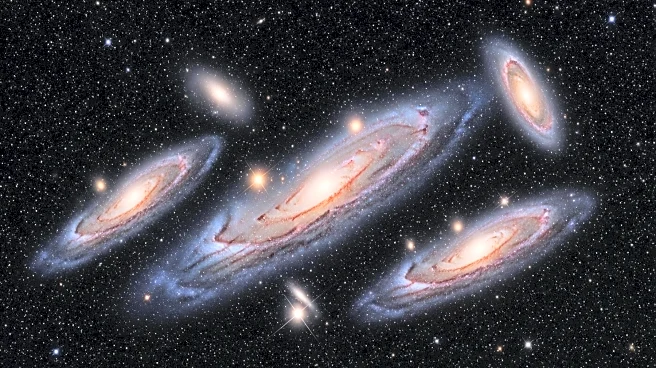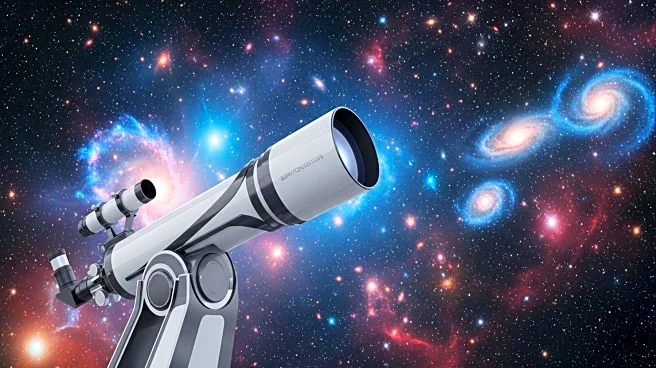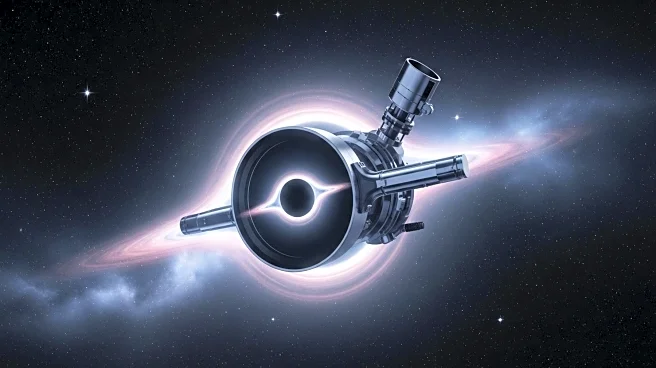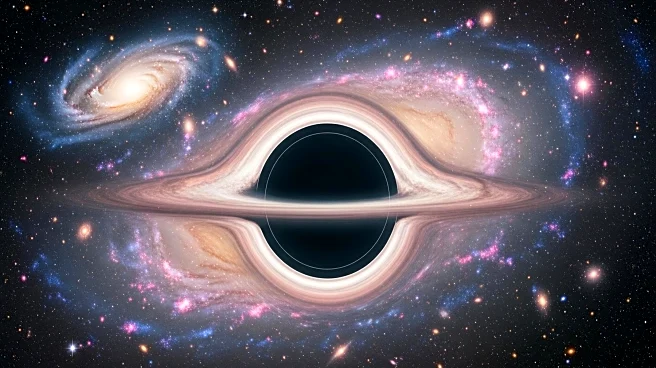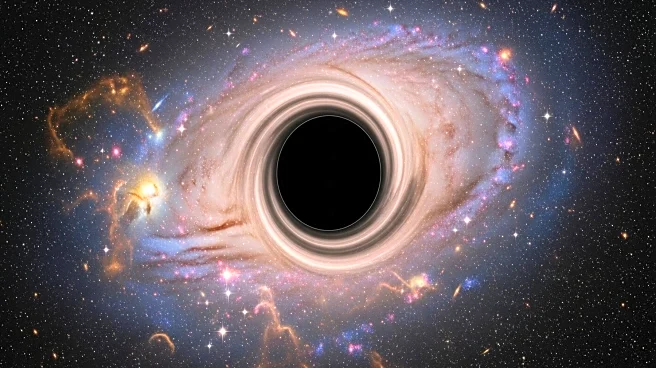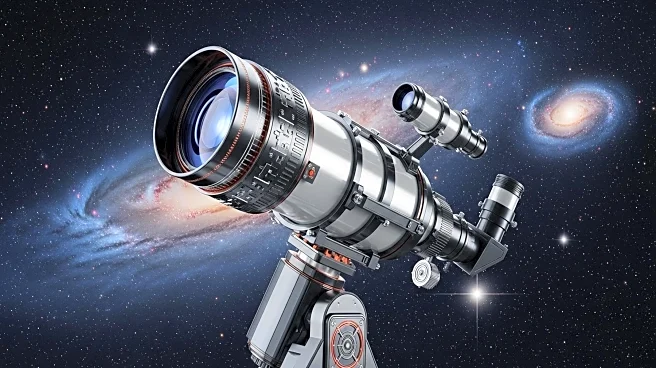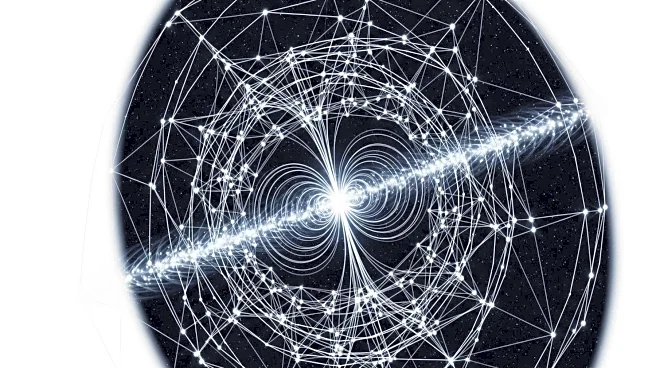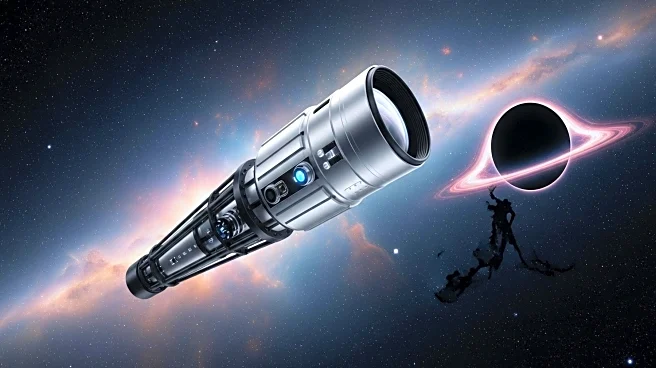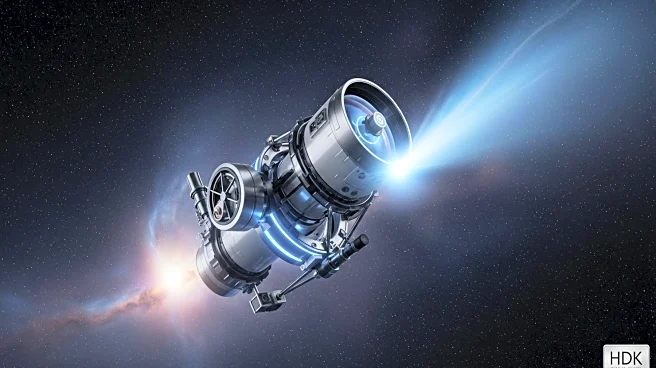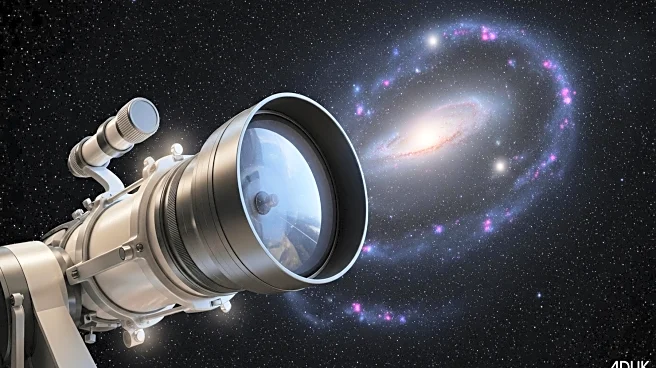What's Happening?
The James Webb Space Telescope (JWST) has discovered an exceptionally rare system where at least five galaxies are merging, just 800 million years after the Big Bang. This finding, made in conjunction with the Hubble Space Telescope, provides a unique glimpse into the early universe's galaxy formation processes. The merger, known as JWST's Quintet, includes galaxies with prominent emission lines, indicating active star formation.
Why It's Important?
This discovery is significant for understanding the dynamics of galaxy formation and evolution in the early universe. The merging of multiple galaxies can lead to the creation of massive, quiescent galaxies, offering insights into how galaxies evolve over time. The data from JWST and Hubble can help refine models of the universe's development and provide clues about the conditions that lead to galaxy mergers.
What's Next?
Further observations and analysis of JWST's Quintet could reveal more about the nature of these merging galaxies and their impact on the surrounding cosmic environment. Researchers aim to identify additional systems like this to better understand the frequency and conditions of galaxy mergers in the early universe. These studies could challenge or confirm existing theories about galaxy formation and the role of supermassive black holes in these processes.
